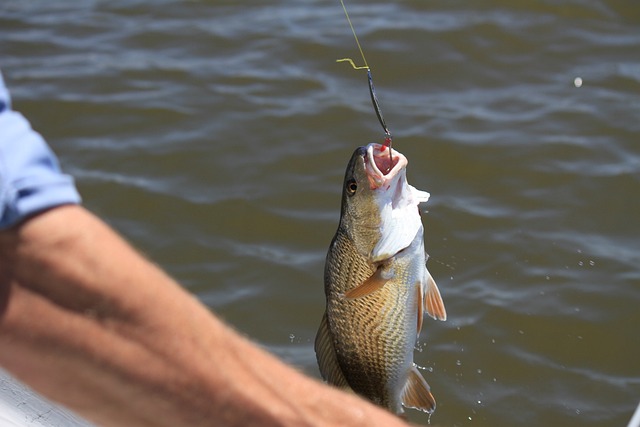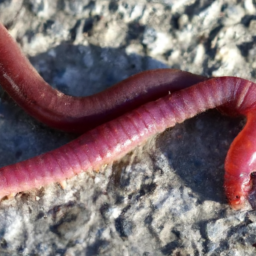If you’re new to fishing or just need a refresher, this article is here to help you out. You’ll learn the step-by-step process of tying a fishing knot, ensuring your line stays strong and secure. From choosing the right knot for your needs to mastering the technique, we’ve got you covered. So, let’s get started and make sure you’re ready for your next fishing adventure.
Choosing the Right Fishing Knot
Fishing requires the use of various knots to secure your line and hooks. Whether you are a seasoned angler or just starting out, knowing how to tie a fishing knot is essential for a successful and enjoyable fishing experience. Each fishing knot has its own purpose and is suitable for different situations. In this article, we will guide you through the process of choosing and tying the right fishing knot.
Understanding Different Types of Fishing Knots
Before diving into the process of tying a fishing knot, it is important to understand the different types of knots available. There are numerous fishing knots, each designed to serve a specific purpose. Some of the most commonly used fishing knots include the Improved Clinch Knot, Palomar Knot, Uni Knot, and Surgeon’s Knot.
Considerations for Selecting the Right Knot for Different Situations
Choosing the right fishing knot depends on several factors, such as the type of fishing line and fishing technique you are using, the size of your hooks, and the strength required for the specific fishing scenario. For example, if you are using heavier line for saltwater fishing, you may need a stronger knot that can withstand the pressure. It is important to consider these factors when selecting the best fishing knot for your needs.
Factors to Consider When Choosing the Best Fishing Knot
When deciding on the best fishing knot for your situation, there are a few key factors to keep in mind. These include knot strength, ease of tying, and knot reliability. The knot should be strong enough to handle the weight of the fish you are targeting and the pressure you’ll be applying during the fight. Additionally, the knot should be easy to tie and should not easily slip or come undone. Considering these factors will help ensure that you choose a fishing knot that will perform well on the water.
Learning the Basic Fishing Knots
Now that you understand the importance of choosing the right fishing knot, let’s delve into the step-by-step process of tying some of the most commonly used fishing knots.
The Improved Clinch Knot
The Improved Clinch Knot is one of the most popular fishing knots and is often used to secure hooks, swivels, and lures to the fishing line. Here’s how you tie it:
-
Prepare the Line and the Hook: Start by threading the line through the eye of the hook. Make sure to leave a sufficient length of line to work with.
-
Pass the Line Through the Eye of the Hook: Take the loose end of the line and pass it through the eye of the hook, creating a loop.
-
Create a Simple Overhand Knot: Take the loose end of the line and wrap it over the main line, creating a loop. Pass the loose end through the loop.
-
Form the Improved Clinch Knot: Hold the loose end of the line with one hand and the main line with the other. Slowly pull the loose end to tighten the knot around the main line. Make sure the knot is snug and secure.
-
Secure and Tighten the Knot: Trim any excess line close to the knot, leaving a small tag end. Wet the knot with water or saliva to lubricate it, then firmly pull the main line to fully tighten the knot. The Improved Clinch Knot is now ready for use.
The Palomar Knot
The Palomar Knot is another popular and versatile fishing knot that is used to secure hooks, swivels, and lures. It is known for its simplicity and strong hold. Follow these steps to tie the Palomar Knot:
-
Double the Line: Double a section of the line, creating a loop.
-
Pass the Loop Through the Eye of the Hook: Pass the loop through the eye of the hook, ensuring that both the doubled line and the loose end of the line are on the same side of the hook.
-
Tie a Simple Overhand Knot: Take the loop and tie a simple overhand knot, making sure to leave a large enough loop to pass the entire hook through.
-
Insert the Hook and Loop Through the Overhand Knot: Take the loose end of the line and insert it, along with the hook, through the loop created by the overhand knot.
-
Tighten and Secure the Palomar Knot: Wet the knot with water or saliva, then hold the loose end and the main line and pull them tight. Trim any excess line near the knot, leaving a small tag end. The Palomar Knot is now complete and ready to be used.
The Uni Knot
The Uni Knot is a versatile and reliable knot that can be used for a variety of fishing applications, including attaching hooks, swivels, and lures to the fishing line. Follow these steps to tie the Uni Knot:
-
Pass the Line Through the Eye of the Hook: Thread the line through the eye of the hook, leaving a sufficient length of line to work with.
-
Create a Loop with the Line: Take the loose end of the line and make a loop parallel to the main line, with the loose end pointing away from the hook.
-
Wrap the Line Around the Double Line: Take the loose end and wrap it around the doubled line, passing through the loop created in Step 2. Repeat this wrapping process 4-6 times.
-
Pass the Line Through the Loop: After completing the wraps, take the loose end and pass it through the loop created in Step 2.
-
Tighten and Secure the Uni Knot: Wet the knot with water or saliva, then hold the loose end and the main line and pull them tight. Trim any excess line close to the knot, leaving a small tag end. The Uni Knot is now secure and ready to be used.
The Surgeon’s Knot
The Surgeon’s Knot is a reliable knot that is commonly used to join two pieces of fishing line of similar or different diameters. It is known for its simplicity and strength. Follow these steps to tie the Surgeon’s Knot:
-
Overlap the Ends of the Lines: Take the two ends of the lines you wish to join and overlap them for several inches.
-
Create an Overhand Knot with the Overlapping Ends: Take the loose ends of the lines and tie a simple overhand knot, making sure to leave a large enough loop.
-
Pass the Ends through the Overhand Knot: Take the loose ends and pass them through the loop created by the overhand knot. Repeat this process a second time, creating a double loop.
-
Moisten and Tighten the Surgeon’s Knot: Wet the knot with water or saliva, then firmly grasp the loose ends and the main lines and slowly pull them apart to tighten the knot. Make sure the knot is secure and trim any excess line near the knot, leaving a small tag end.
Tips and Tricks for Successful Knot Tying
Tying a fishing knot successfully requires practice and attention to detail. Here are some tips and tricks to help you improve your knot tying skills:
Moistening the Knot Before Tightening
Before pulling the knot tight, it is important to wet the knot with water or saliva. This lubricates the knot, allowing it to slide and tighten more smoothly. Moistening the knot also helps to reduce friction, preventing damage to the fishing line.
Trimming Excess Line After Tying
After tying a knot, it is important to trim any excess line near the knot. Leaving a small tag end helps to prevent the knot from unraveling and allows for a more streamlined presentation in the water. Be sure to use a sharp pair of scissors or fishing line cutters to make a clean cut.
Testing the Strength and Reliability of the Knot
Before casting your line, it is essential to test the strength and reliability of the knot. Give the line a firm tug to ensure that the knot does not slip or come undone. Testing the knot before fishing can help prevent lost fish and the frustration of retying knots on the water.
Practicing Knot Tying Techniques
Like any skill, tying fishing knots improves with practice. Take the time to practice tying different knots at home or during downtime on the water. This will help increase your confidence and speed when tying knots in real fishing scenarios.
Common Mistakes to Avoid
While tying fishing knots, there are a few common mistakes that can lead to knot failure or decreased performance. Here are some mistakes to avoid:
Failure to Properly Tighten the Knot
One of the most common mistakes is failing to properly tighten the knot. A loose knot can easily slip or come undone, causing the loss of fish or even the entire rig. Make sure to firmly and evenly pull the main line and loose ends to fully tighten the knot.
Using Incorrect Knots for Different Scenarios
Using the wrong knot for a specific fishing scenario can result in knot failure or reduced performance. It is important to understand the purpose and strength of each knot and choose the most appropriate one for your fishing needs.
Not Moistening the Knot Before Tightening
Failing to wet the knot before tightening can increase friction and make it more difficult to pull the knot tight. This can lead to damage to the fishing line or a weaker knot. Always remember to moisten the knot with water or saliva before applying tension.
Neglecting to Trim Excess Line
Leaving excess line near the knot can cause the knot to become snagged on weeds or other underwater obstacles. It can also create unnecessary drag, affecting casting distance and accuracy. Trim any excess line close to the knot to ensure a clean presentation in the water.
Importance of Secure Knots in Fishing
Using secure knots in fishing is essential for several reasons:
Preventing Lost Fish and Broken Lines
A secure fishing knot ensures that your line remains attached to the hook or lure, preventing lost fish and frustration. It is important to tie knots that can withstand the force exerted by a fighting fish, ensuring that your line remains intact throughout the battle.
Ensuring Reliable Hooks and Lures
A strong and secure knot allows the hook or lure to move naturally in the water, providing a realistic presentation and increasing the chances of attracting fish. Using a weak or unreliable knot can cause the hook or lure to detach, resulting in missed opportunities.
Increasing Fishing Success and Efficiency
By choosing and tying the right fishing knot, you increase your chances of success and efficiency on the water. A secure knot gives you confidence in your gear, allowing you to focus on reading the water and using proper techniques to attract fish.
Conclusion
Tying a fishing knot is an essential skill for any angler. By understanding the different types of fishing knots, considering the factors that dictate knot selection, and practicing the step-by-step techniques for tying different knots, you can ensure that your knots are strong, reliable, and well-suited for a variety of fishing scenarios. Remember to test the strength of your knots before fishing and to avoid common mistakes that can lead to knot failure. By using secure knots, you can increase your fishing success, prevent lost fish and broken lines, and enjoy a more efficient and enjoyable fishing experience.


